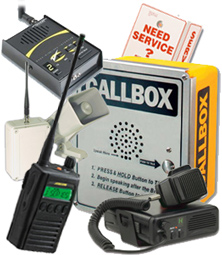When you hear the term two-way radio there are a lot of products that could fit this generic term. You’ll also hear the terms walkie-talkie, handy talkie, hand-held radio, base station radio, mobile radio, land mobile radio, private land mobile radio, family radio service, specialized mobile radio, and commercial mobile radio service. All these terms are essentially referring to a radio that allows you to have two-way communication.
The differences between all these two-way radio products amounts to the quality of the construction of the  radio, the frequencies used, and the features available. You can get a cheap pair of radios for $50 or you can spend a few hundred for ones that meet military-tough standards and has all the features you would want and then some.
radio, the frequencies used, and the features available. You can get a cheap pair of radios for $50 or you can spend a few hundred for ones that meet military-tough standards and has all the features you would want and then some.
Two-way radios are essentially available in three types: hand-held portable, vehicle-mounted mobile, and desktop base station. There are also unique two-way radio devices such as indoor and outdoor call boxes and one-way radio receivers for wireless paging that we will cover in other sections as well.
Handheld portable two-way radios are the walkie talkie type of radios you see people carrying around. As ruled by the FCC (Federal Communications Commission), handheld radios may not have more than 5 watts of power.
Vehicle-mounted mobile two-way radios mount in a car or truck and they use the vehicle’s battery for power. They may have their own antenna, but better range is achieved by using an externally-mounted antenna.
Desktop base station radios use wall AC power and they too may have a built-in antenna, but this antenna may be disconnected and then connected to cable that leads to an external-mounted antenna. The higher the antenna is mounted, the better the range. The vehicle-mounted mobile radios are usually used as base stations by just adding an AC to DC power converter.
Mobile and Base station radios are usually more powerful than hand-held radios and may have as much as 100 watts of power.
To help you through the confusion of buying them, you can find a two-way radio guide at www.IntercomsOnline.com. It reviews all the technical details about two-way radios, plus it tells you about some of the unique applications you can use them for.
